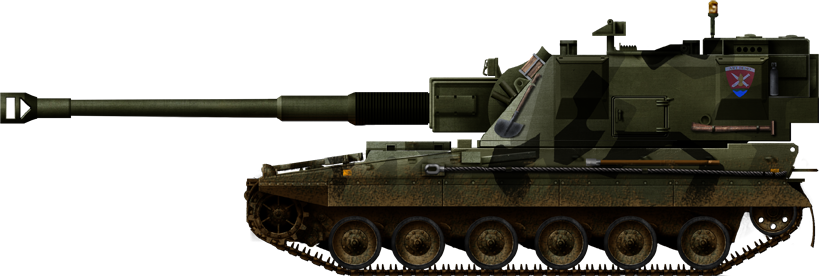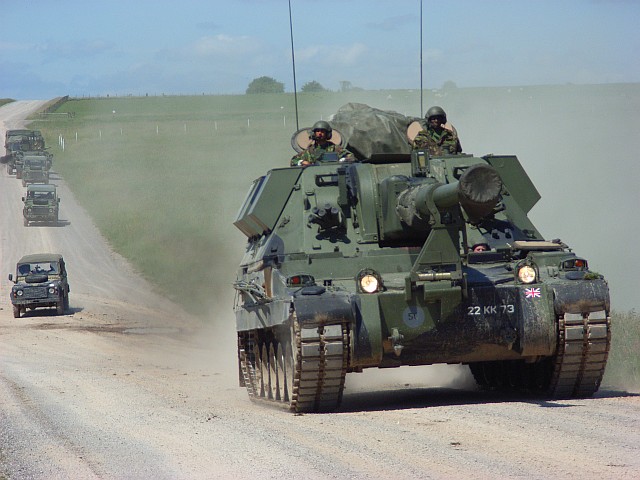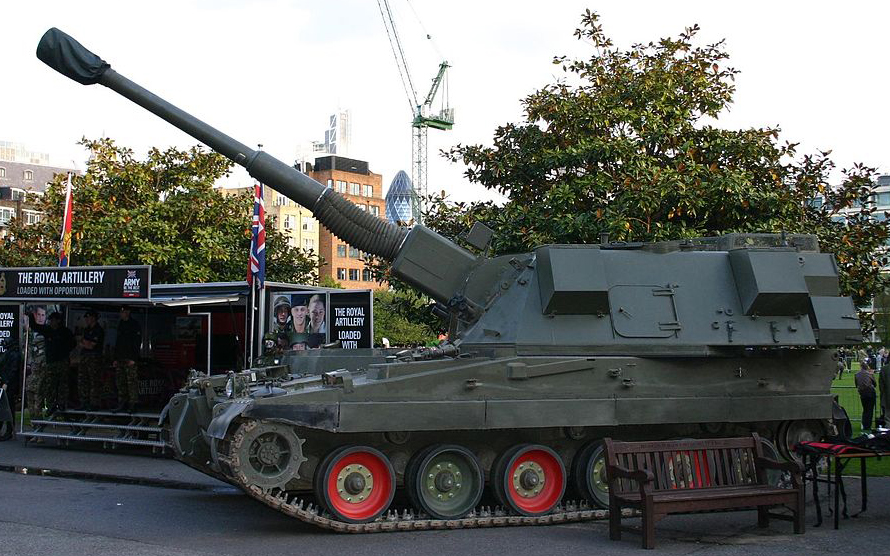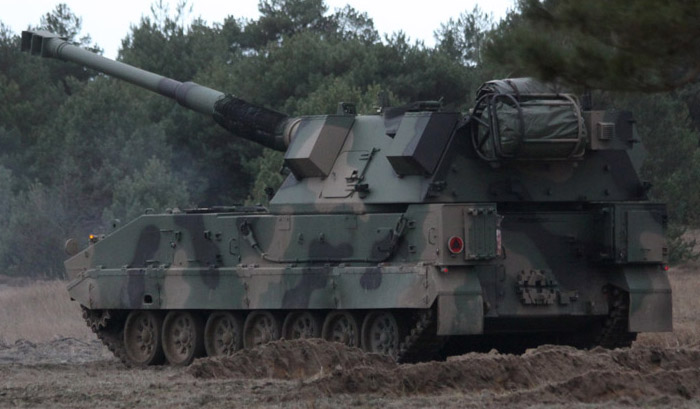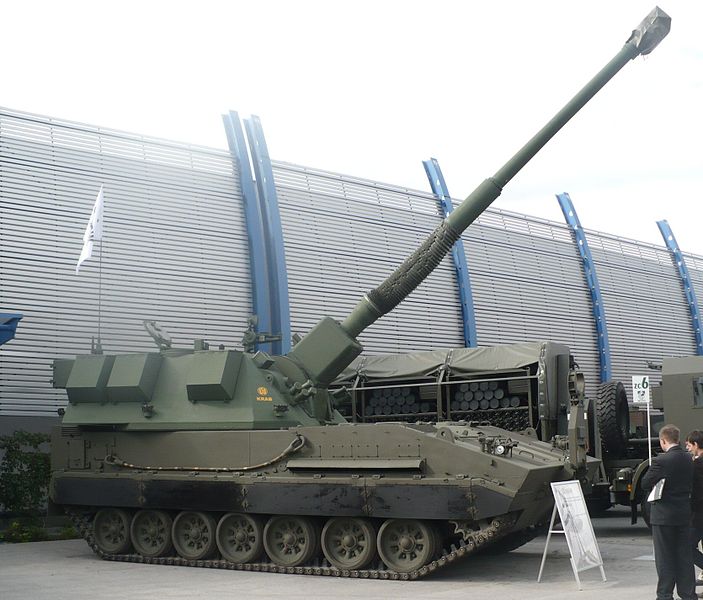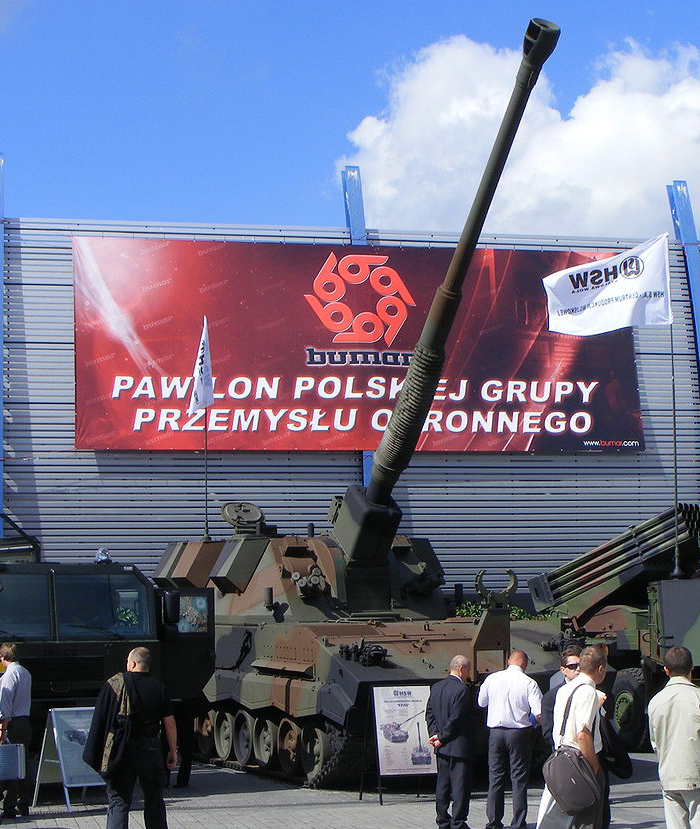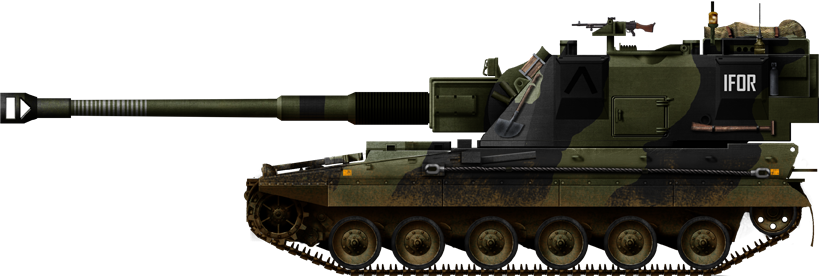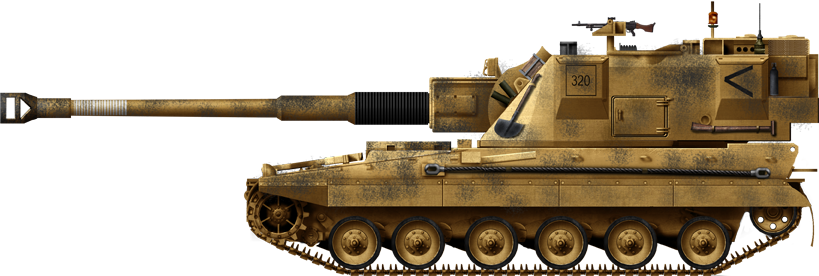Development of the AS-90
AS-90 is an abbreviation for Artillery System for the 1990s. The official name is "Gun Equipment, 155 mm L131". It is a self-propelled artillery gun developed for the British Army. The program started as a replacement for the 105 mm FV433 Abbot SPG and the M109 155 mm Self Propelled Gun. It was started as a private venture by Vickers because they believed the SP-70 SPG tri-country development program would fail. They were correct.The minister of defense indeed issues a specification when the project eventually was canceled, and among four propositions, Vickers Shipbuilding and Engineering (VSEL) AS-90 design was chosen and approved. The latter became BAE Systems in 1999 and production started in 1992, until 1994. By 2006 there were plans to upgrade the 155 mm howitzer, for better range and accuracy, and start closing on naval needs for a joint program. The whole program was evaluated to £300 million ($480 million USD) in 1995.
Design of the AS-90
Armament
The basic design around the new 155 mm SPG came from a 1963 Ballistics Memorandum of Understanding for a 39 caliber ordnance of this caliber, with a baseline projectile standardized to the US M549 rocket-assisted shell. The Vickers howitzer was found compliant to this standard, using the L15 unassisted projectile which allows a range of 24.7 km, but with some specifics.Instead of the more common screw breach, a split sliding block breech with Crossley obturation system was chosen. This allowed the use of bagged charges instead of metal cartridges. The primer magazine contained 18 primers and the standard ammunition was the FH-70 round (L15 HE) while the cheaper M107 is used in training instead. The main gun is capped by a double-baffle muzzle brake.
The howitzer range was 24.9 km (39 cal), and 30 km with the tested 52 cal version and standard charges. The rate of fire was 3 rounds in a 10 seconds burst saturation fire, 6 rounds per minute for 3 minutes or 2 rounds per minute in sustained fire. The secondary armament comprised a 7.62 mm L7 GPMG on the roof. The ammunition comprised 48 projectiles and charges, with 31 stored in the turret and 17 located in the hull and 1000 MG rounds.
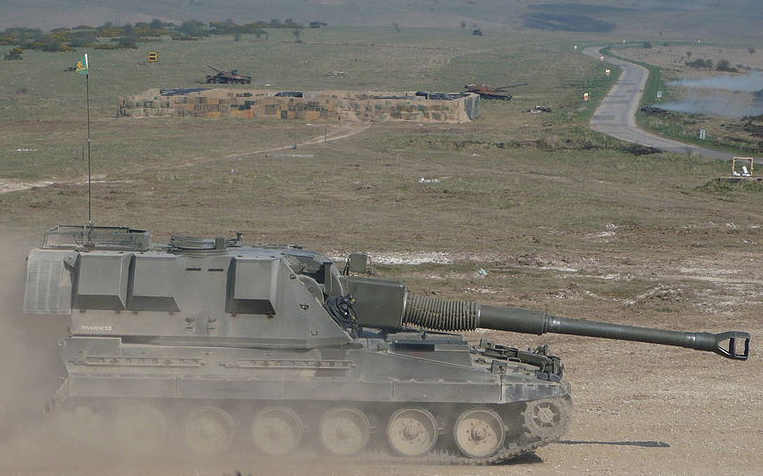
AS-90 training in Salisbury plains.
Energy
The gun had its own power supply independent of the main engine in order to fire in a stationary position while keeping the battery charged for any move. The Elevation, traverse, magazine, shell transfer, loader motion are electrically-powered as well as the electronics and communications.Hull, turret & propulsion
The hull was custom-built to support and propel the fully traversing turret. It was made of welded RHA, 17 mm thick on the front glacis, NATO-proven against small arms fire, 14.5 mm armor piercing shells and 152 mm shell fragments. The turret itself had sloped sides, and was approximatively 2/3 of the whole length of the hull. Added to the gun, the overall length was 9.07 m.The crew comprised the driver (center front) with its own day/night periscope, while the commander, gunner and loaders were housed inside the turret. There was a rear door for access/exit of the crew and ammunition supply. The drivetrain comprises six paired roadwheels (rubber-clad) suspended by hydropneumatic (Hydrogas) arms (Horstman Defence Systems), with the drive sprocket on front and idler at the rear. The powerplant is a Cummins 90 degree, v8, 4 stroke, liquid cooled, turbo diesel VTA903T capable of 660 bhp. This diesel developed a power-to-weight ratio 14.66 hp/t.
It is coupled with a ZF Gears Ltd automatic transmission with four forward and two reverse gears. Max Speed was around 54-55 km/h on flat, and range 370 km (231 miles). Ground clearance was 41 cm and on trials, the AS-90 showed it could negotiate gradients of 60°, a vertical obstacle of 75 cm, cross 110 inches wide trenches and fording a 1.50 m deep water strait.
Electronics
The main gun uses an autonomous navigation and gun laying dynamic reference unit (DRU), applied directly on the trunnion. A common Turret Control Computer (TCC) compiled data from the various sensors on the roof and gun muzzle, received data from the HQ and human inputs. The Detachment Commander, loader and layer (Avimo direct fire sight) had their own display & command displays by VSEL.The autolaying is provided by the combined data from the DRU, TCC and powered laying controls. A Radar Muzzle Velocity Measuring Device helps fire in reversionary mode via the direct fire sight. The automatic gun-laying system (AGLS) serving elevation and traverse laying is credited for a 1 mile accuracy (angle 3.375 minutes), and rapid target engagement. There is also a barrel cooling system to help achieve faster rates of fire.
AS-90 firing in Basra, March 2003.
Evolution
In 1999, Vickers was integrated into BAE systems and it was asked an upgrade program for a 52 cal. main gun upgrade to increase the range. Marconi Electronic Systems tested a bi-modular charge system developed by Somchem of South Africa, but due to several issues, notably the failure to meet the intensive fire requirements, the whole project was terminated. The 96 out the 179 vehicles electronic systems were upgraded along the capability enhancement program of 2008-2009. Part of it comprised the laser inertial artillery pointing system (LINAPS) digital gun sight.Variants
The AS-90D is a special version modified for desert use with an extra climatization for the crew, and extra cooling for the engine and gun machinery. The design of the tracks is adapted for sandy conditions, lessening the sand wear on metal, which runs on a Diehl 940-single pin track.The Haubicoarmata "Krab" - is a Polish license built AS-90 turret married with a K9 Thunder chassis (Huta Stalowa Wola and WB Electronics). It received the "Azalia" BMS. Two prototypes were built in 2001, and successfully completed all required evaluations trials. Initial serial production started in 2008, with eight units delivered to Polish Land Forces for testing. In 2014 production of Krab chassis was forwarded to Korean Samsung Techwin, which will build 120 units, replacing Polish built UPG chassis
In action
The 179 AS-90s were given to three British field regiments supporting armoured infantry brigades: 1st Regiment Royal Horse Artillery; 19th Regiment Royal Artillery and 26th Regiment Royal Artillery. Their rapid-fire capability allows them to deliver a total payload of 261 kg onto a single target in less than ten seconds, coming close of the German Panzerhaubitze performances. The AS-90 took part in several joint exercises, including in the Arizona Desert in 1994, in Kuwait and Saudi Arabia in 1996.In 29 March 2001, a unit was deployed during Operation Cambrai in Kosovo. This unit was used to fire illumination rounds, enabling British troops to spot any suspected Albanian rebels trying to cross the border, in support to the KFOR deployment. In March 2003, AS-90Ds were deployed in Iraq during Operation Iraqi Freedom. They saw action around Basra and following the deployment of British troops in the area.
However in July 2004, the UK Ministry of Defence announced a reduction of six vehicles per battery. The most recent joint exercises Raytheon M982 Excalibur extended-range 155 mm trials took part in 2006. The AS-90 proved compatible with the M982 Excalibur Ia-2 rounds.
Sources
The AS-90 on WikipediaAS-90 on Army-technology.com
AS-90 specifications |
|
| Dimensions | 9.07 oa x 3.50 x 2.49 m (29.9 x 11.6 x 8.2 ft) |
| Total weight, battle ready | 45 tons ( ibs) |
| Crew | 5 (Driver, commander, gunner, loader, layer) |
| Propulsion | Cummins VTA903T V8 diesel 660 hp (493 kW) - pwr 14,6 hp/t |
| Suspension | Independent hydro-pneumatic torsion bars units |
| Speed (road) | 53 kph (33 mph) |
| Range | 420 mi (261 km) |
| Armament | Main : BAE systems 155 mm L31 39 cal. 48 rds howitzer Sec. 7.62 mm GPMG NATO L7 |
| Armor | 17 mm front (0.66 in) |
| Total production | 179 in 1992-95. |

Modern Tanks
Modern MBTs posters

Denel Bagder (2018)

Type 16 MCV (2016)

Gepard 1A2 last rounds 2011

SANDF

Russian AFVs

Main Battle Tanks
